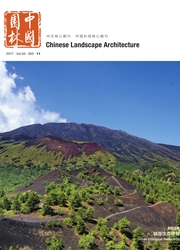

 中文摘要:
中文摘要:
首先对绿地与城市空间耦合理论进行了诠释,认为该理论是对绿地空间存在于城市中的基本方式这种普遍现象的解释,是对城市空间和绿地空间矛盾运动规律的总结,该理论由耦合模式、耦合过程、耦合功能这3个重要概念构成,在此基础上建立了绿地与城市空间耦合的概念框架。其次,构建了基于该理论的城市绿地空间评价体系,它是耦合模式、过程和功能三位一体的评价体系,该评价体系的指标体系由耦合的空间形态模式指标、耦合的空间内容模式指标、耦合的空间关系模式指标三方面构成。第三,提出了基于该理论的城市绿地空间的规划方法,它主要通过结构性空间要素的耦合、骨架性空间要素的耦合、功能性空间要素的耦合3个方面来实现。最后通过对石家庄滹沱河滨水新区规划案例的分析,说明了该评价体系和规划方法的具体应用。
 英文摘要:
英文摘要:
The coupling theory of city and green space is explained first, which illustrates the common phenomenon that how green space exists in the city space, and reveals the laws how they influence each other. The theory consists three important concept which are coupling model, coupling process and coupling function and on this basis the conceptual framework of the coupling of green space and city space is established. Secondly, based on the coupling theory, the thesis constructs the evaluation system of city green space—an evaluation system with the trinity of coupling model, process and function, and its indicator system is constituted by the three aspects of coupling space form model indicator, coupling space content model indicator, and coupling space relationship indicator. Thirdly, the paper puts forward the urban green space planning method based on the theory, which is realized mainly from the three aspects of the coupling of structural space elements, the coupling of framework space elements, and the coupling of functional space elements. Finally, through the case study of Hutuo River waterfront area plan, the paper illustrates how to put the evaluation system and plan method into practice.
 同期刊论文项目
同期刊论文项目
 同项目期刊论文
同项目期刊论文
 期刊信息
期刊信息
